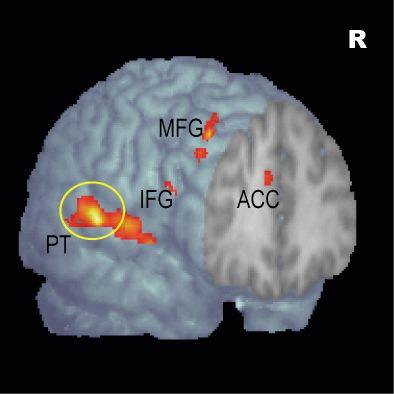A team of scientists led by a researcher from the Hebrew University identified an area of the brain that deals with spatial processing of background sounds
The brain discovers its north - A collection of articles on the subject of the brain

While areas of the brain that deal with visual information have been studied in depth, many important areas for auditory processing remain 'uncharted land'. Now scientists from the Hebrew University of Jerusalem and other research institutions have identified an area of the brain that regularly deals with the analysis of the auditory space even when the listener is not concentrating on the sounds.
The scientists, led by Dr. Leon Deuel from the Department of Psychology and the Center for Neural Computing from the Hebrew University, published their findings today in the September 20 issue of the scientific journal Neuron. Other participants in the research project: Aaron Heller from the University of California, Berkeley; Prof. Raphael Malach from the Weizmann Institute of Science; Prof. Mark D'Esposito and Prof. Robert Knight from the University of California, Berkeley.
Other researchers have shown in their studies that an area located in the upper part of the temporal lobe and known as Planum temporale (side level) was active, when subjects were asked to listen to sounds and in the process track their position in space. However, the same researchers believed that the region was only responsible for the directed analysis of spatial information. In fact, these studies failed to show that the area is continuously involved in the decoding of voices and background sounds, even in the absence of attention, that is, that it is responsible for an automatic and undirected representation, a sort of default, of the auditory space.
A previous study conducted by Dr. Deuel and others showed that patients with a brain injury in the right hemisphere do not automatically target spatial locations. The damage in these patients is not exactly in the Ramat Tzadeh area, but it is possible that it causes a disturbance in the communication of this area with other areas. Understanding how the normal mechanism in the brain is organized in this function may teach how it is damaged and how it should be repaired.
In their study, Dr. Deuel and his colleagues used an improved experimental set-up that enabled a higher sensitivity to activity in the auditory space. The researchers created a virtual auditory space in an MRI machine that was customized for each subject.
During the experiment, the subjects' brains were scanned with an MRI machine. With this technique, using harmless magnetic fields and radio waves, it is possible to see the exact structure of the brain as well as the changes in blood flow to different areas of it. The changes reflect changes in neural activity in the brain.
The subjects experienced bursts of noise through headphones and were asked to ignore the background noise. Instead they had to focus on a feature film or respond to visual stimuli by pressing a button.
When the noise bursts changed their place in space, a clear response and activity was recorded at the level of the brain of the subjects. Moreover, as the changes in the location of the noise increased during the experiment, so did the activity at the level of the side.
The researchers concluded that the nerve cells in this area represent the auditory space in an automatic and undirected way.
The process that houses intelligence in the brain has been revealed
